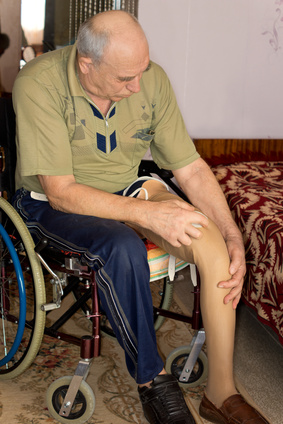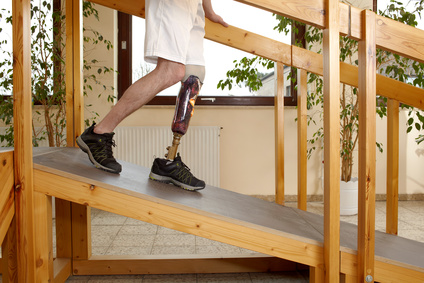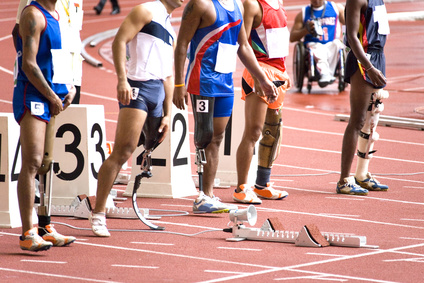 The ability to sit, stand and walk comes naturally to adults. The movement of the leg during normal gait involves a complex sequence of events involving the hip, knee and ankle joints.
The ability to sit, stand and walk comes naturally to adults. The movement of the leg during normal gait involves a complex sequence of events involving the hip, knee and ankle joints.
In the case of an accident or disease, the use of an artificial limb or 'prosthesis' may be required. This is a major adjustment for the human body. Physical therapy is critical during this life changing transition. The patient is taught to use, manage and care for the residual limb, and treat it like an extension of the body. The use of such devices in children requires careful attention and the services of specialized pediatric physical therapists. Young patients are typically more amenable to robotics and similar advancements, but skilled care to ensure proper development of the spine while maintaining balance is critical.
Therapists teach patients to perform everyday tasks that others take for granted, from bathing and cooking to transferring in and out of bed. Therapists provide guidance on environmental adaptations that make mobility easier, while reducing injuries and the risk of falling.


 Efficient, pain-free movement with prosthetics requires the services of a licensed physical therapist. The scope of therapy is significant, and it extends well beyond the physical and neurological domain.
Efficient, pain-free movement with prosthetics requires the services of a licensed physical therapist. The scope of therapy is significant, and it extends well beyond the physical and neurological domain. Physical therapists use a variety of tools to promote quality of life and prevent falls. The use of mirrors to provide instant feedback reinforces the correct movement patterns and builds confidence. Therapeutic massage, dry needling, and acupuncture are effective for relieving real and phantom pain and preparing the limb for a prosthetic. These methods reduce stress, anxiety, and elevate mood, along with stimulating circulation to the affected anatomy. Patients learn self-massage techniques for desensitizing the limb, improving muscle control and preparing for movement.
Physical therapists use a variety of tools to promote quality of life and prevent falls. The use of mirrors to provide instant feedback reinforces the correct movement patterns and builds confidence. Therapeutic massage, dry needling, and acupuncture are effective for relieving real and phantom pain and preparing the limb for a prosthetic. These methods reduce stress, anxiety, and elevate mood, along with stimulating circulation to the affected anatomy. Patients learn self-massage techniques for desensitizing the limb, improving muscle control and preparing for movement.